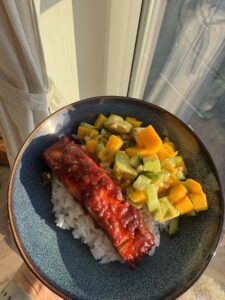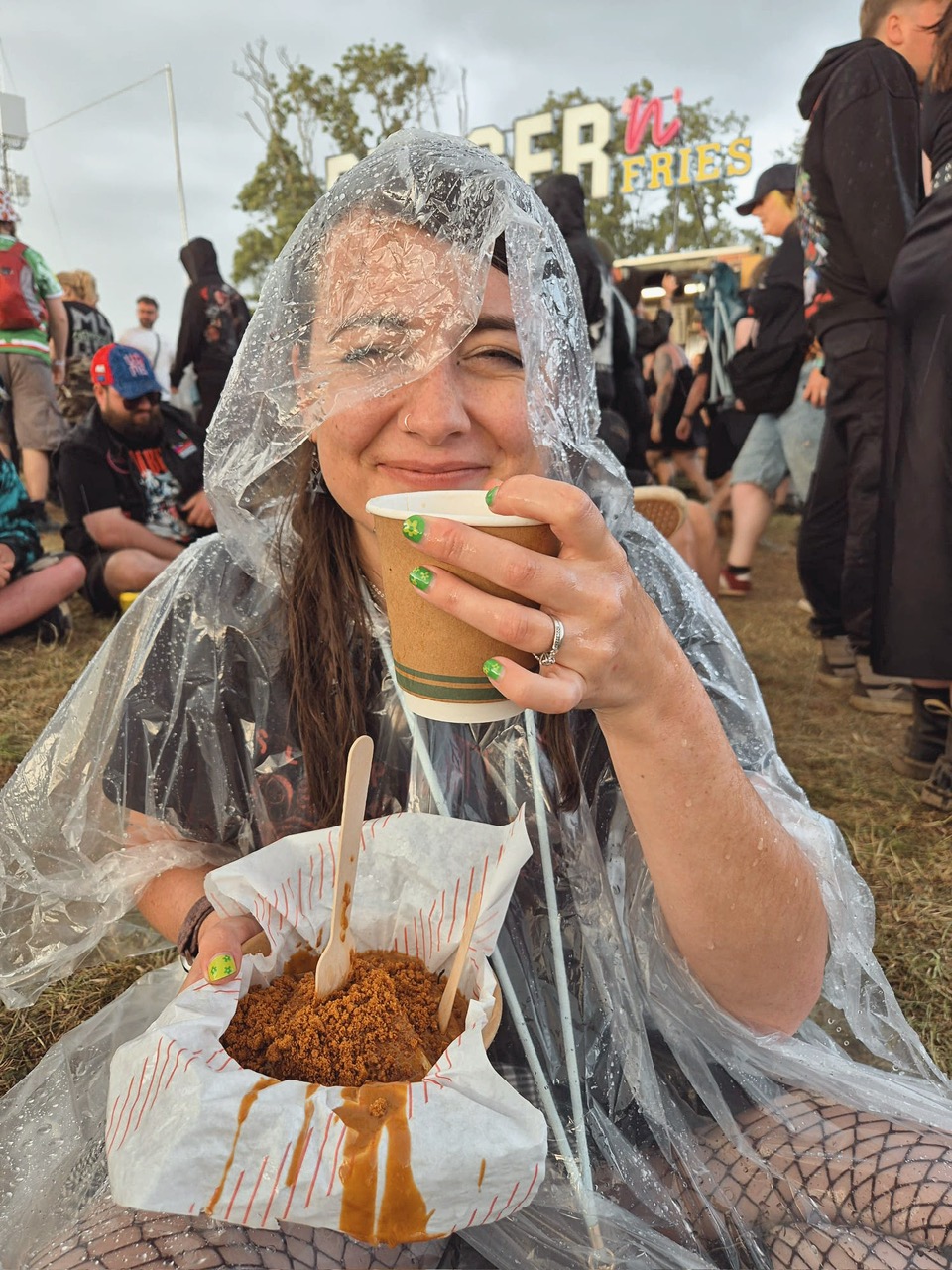Knowing what you can and can’t eat after stoma surgery can feel like a bit of a minefield. I remember how overwhelming it all felt at the start, but now, nearly four years on, I’ve found a routine that works for me. I wanted to share what a typical day of eating looks like as an experienced ostomate, what keeps me nourished, what foods I avoid, and the little tips that make a big difference.
Breakfast
I always start my day with a coffee – usually in a to go cup on the way into the office!
My go-to breakfast is Greek yoghurt with raspberries, blueberries, and a drizzle of honey. There’s often a lot of talk about avoiding fruit with a stoma, but I’ve found that if you chew thoroughly, it’s totally manageable.
Another favourite is yoghurt with granola. I love the Nice and Nobbly granola because it’s crunchy and satisfying without any whole nuts (which I do tend to avoid).

Lunch
Lunch varies depending on where I am. If I’m working from home, I’ll often have leftovers from the night before. In the office, I usually grab a meal deal – my usual is a ham and cheese sandwich on brown bread, a Lucozade, and either crisps or a fruit pot.
I always aim to get in a good amount of carbs at lunch – pasta, rice, or bread – as it helps keep me full and my energy stable until dinner.
Dinner
Dinner is where I really enjoy getting creative – I love cooking and I’m a big foodie. I follow a lot of Emily English’s recipes at the moment and try to make meals that are nutritious and stoma-friendly.
Some recent favourites:
- Chicken, basil and feta meatballs with tomato spaghetti
- Salmon and rice with spicy mango salsa
- Homemade pizzas with chicken, peppers, and onions
- Chicken tarragon lasagne – this is a winner. It includes 5–6 different vegetables, all chopped finely or grated, making it easier to digest and packed with goodness
Tip: if you’re worried about veggies, just make sure they’re well-cooked and soft. I’ve found that how you prepare your food makes a big difference to how your body handles it.

Snacks
I like to keep snacks simple and balanced. My favourites include:
- A banana or orange
- Chocolate rice cakes
- Cereal bars
I try to go for snacks that are satisfying and offer some nutritional value to tide me over between meals.
Hydration
Staying hydrated is so important, especially with a stoma. I drink water throughout the day and I really notice it if I don’t — dehydration can hit hard, leading to headaches or even being sick.
My hydration routine:
- Lucozade Sport – I have one most weeks, especially when I need an energy boost
- SIS electrolyte tablets – I always keep a pack in my work bag and usually take one daily. They help replace lost electrolytes and top up my vitamins
Tips for eating with a stoma
- Vitamins are your friend. I take a daily multivitamin, along with B12 and calcium. Having an ileostomy means I don’t have my full large bowel, which affects nutrient absorption – so supplementing is essential.
- Introduce new foods slowly. Everyone is different. I can’t eat lettuce (I had a blockage from it early on), but I know others who can. Test new foods in small amounts to see how your body reacts.
- Watch your output. What you eat will directly affect your stoma output – from colour to consistency, so take note when you try something new. It’s all part of learning what works for you.
Living with a stoma and IBD comes with its challenges, but food doesn’t have to be one of them. With a little trial and error, you’ll figure out what feels good and fuels your body best. Hopefully this post gives you a helpful starting point and a bit of inspiration too!





